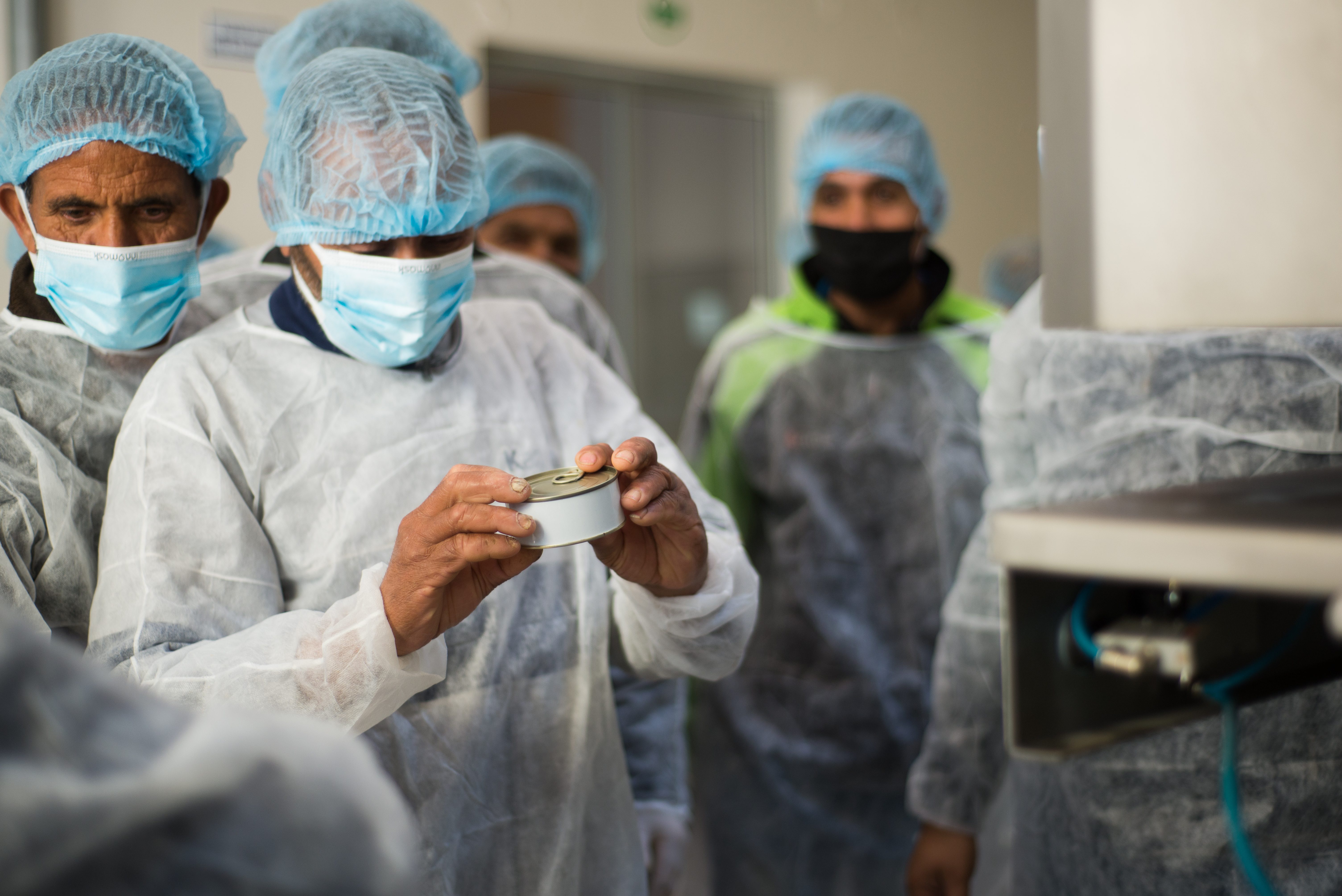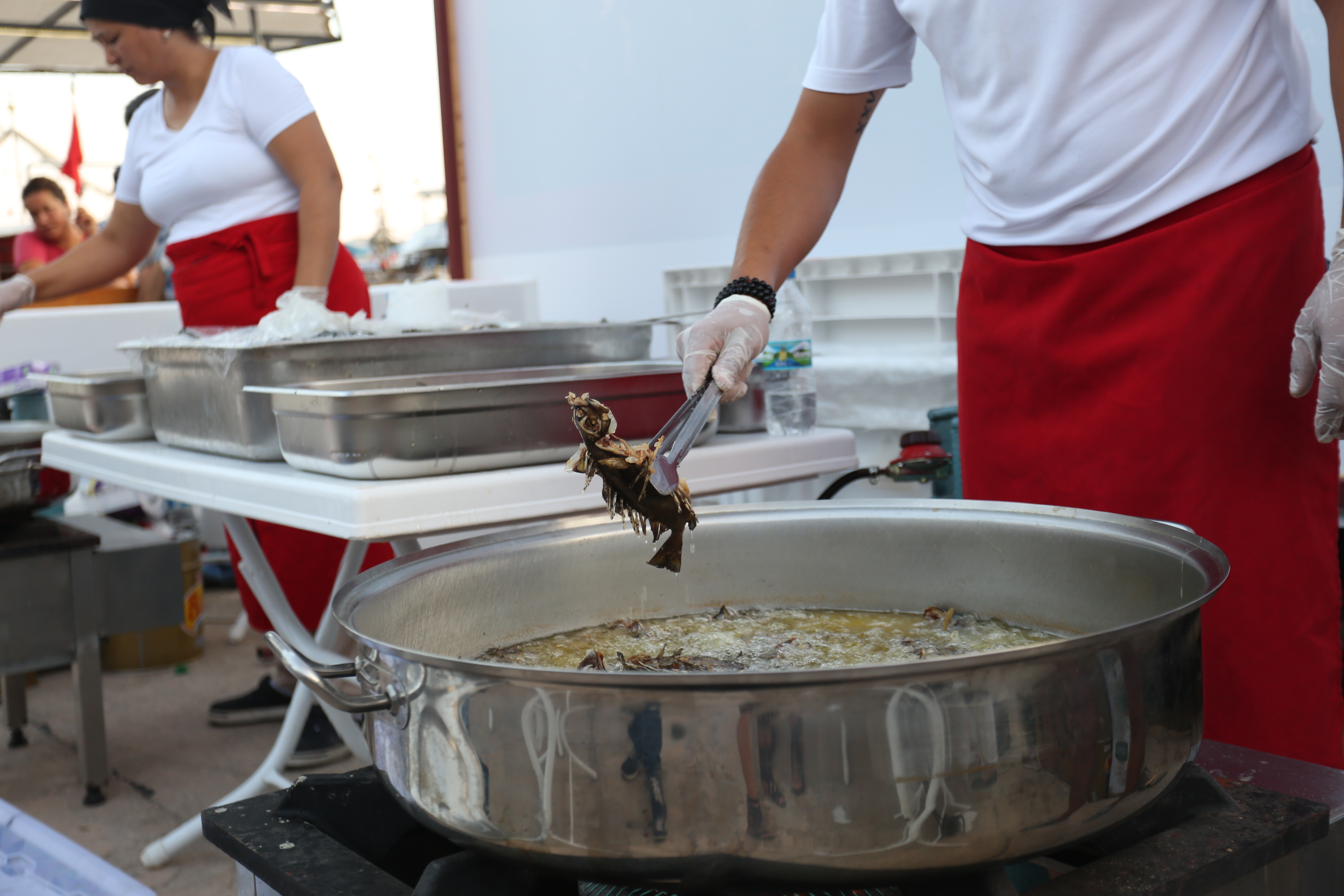The WWF is run at a local level by the following offices...
- WWF Global
- Adria
- Argentina
- Armenia
- AsiaPacific
- Australia
- Austria
- Azerbaijan
- Belgium
- Bhutan
- Bolivia
- Borneo
- Brazil
- Bulgaria
- Cambodia
- Cameroon
- Canada
- Caucasus
- Central African Republic
- Central America
- Chile
- China
- Colombia
- Croatia
- Democratic Republic of the Congo
- Denmark
- Ecuador
- European Policy Office
- Finland

Behind every fish caught there is the process of its extraction from the ecosystem – but there is also a fisher, and behind every fisher there is a family and a community.
Fish stocks in the Mediterranean are under severe pressure. As consumers, though, we can do something to help reduce the fishing pressure on fish species and support the recovery of the sea: besides reducing our consumption of animal protein overall, including fish, we should enjoy seafood as a precious delicacy (and therefore eat it less frequently); when we have to buy seafood we should choose products that have a smaller impact on the environment, while learning to value sustainable small-scale fishers. It’s a win-win choice.
The Mediterranean has a diversity of fish species, but the same (few) species are targeted both locally and on a massive scale across the region, which is one of the reasons for the ongoing overfishing. “In the Mediterranean, stocks are smaller than in the Atlantic, but we do have more species,” says Patrick Bonhomme of the Calanques National Park. In fact, hundreds of species are edible, so why – besides reducing consumption of animal proteins – don’t we eat more diversified food?
Tabarka is a coastal town in north-western Tunisia. The 70 small-scale fishers who belong to its fishing cooperative catch about 52 tonnes each year, but more than a third of this is lower-value fish, such as moray eels, Atlantic bonito, shad and the invasive blue crab. Some species are sold for almost nothing, and some are simply discarded at sea. This is a waste of limited resources and an ethical concern. So in 2020 the fishers tried something new: they worked with biochemical, nutritional, scientific and marketing experts to come up with easy-to-prepare recipes using the ‘low value’ part of their local catch. The Atlantic bonito (Sarda sarda), for instance, is 3-5 times cheaper than tuna, but it has the same taste, and offers high nutritional value.
Today, the fishers of Tabarka are making more money, wasting less fish, and reducing their impacts on the marine ecosystem. Diversification has changed the game.

The same idea works across the water in Italy. Tonnes of curled picarel (Centracanthus cirrus) are caught between December and March by the 90 fishers of Porto Cesareo, but historically no one wanted to buy them. So for World Food Day 2020, WWF and the Porto Cesareo co-management committee organized a tasting day for five curled picarel-based dishes created by a local processing factory. The day was a success, proving there was a potential market for the species. Now the factory buys curled picarel for €3/kg and sells processed products such as tortellini filled with fish or fish patties for burgers in local outlets, creating value where there was none before. For old and new marketed species alike, careful management might allow a transition into a sustainable future.

As the Mediterranean warms, the invasion of alien species increases: some 1,000 non-native species are present today. Most are found along the coasts of the eastern Mediterranean, where the artificial Suez canal connects the Red Sea with the Mediterranean. Alien species now represent more than 50% of SSF catches in some sites, and the further expansion of these species into the central and western Mediterranean is already happening. Climate change exacerbates the situation. Invasive species compete with native species – but if we find their value, and manage their use then catching them can help both fishers and marine ecosystems. Blue crab, lion fish and rabbit fish are high quality seafood when fishers learn how to fish, prepare and market these alien species.

The Akyaka Fisheries Cooperative in Gokova Bay (Turkey) did exactly that, by organizing an event to promote the consumption of these new, unfamiliar fish. “During the event we taught people how to cook these species and tasted them,” Mehmet, a local fisher, explains. “The impact was surprising. Before the festival only 10% of fisher incomes came from invasive species, but now that’s between 30 and 60%!”
As well as being vital for food safety, legality and sustainability, traceability creates a closer relationship between fishers and the customers who buy their catches. It can also add a dynamic of human value to the equation, connecting with the real people behind the products.
Spain’s Organización de Productores Pesqueros Artesanales de la Lonja de Conil (OPP-72) used the idea of traceability to create its own brand, increasing the market value of its products. Customers can scan QR codes which allow them to trace their fish back to the boat that caught it, as well as giving them information on the nutritional qualities of the fish. “It’s all about selling better, not fishing more,” states Nicolàs Fernàndez, manager of OPP-72. Currently, 22 species sport the ‘Pescado de Conil’ brand and QR code, which gives them a premium position on the market: for example, since the brand’s launch, the price of rubberlip grunt has risen from €2/kg to €10-12/kg, while the price of moray eels has rocketed from €0.10/kg to €3/kg. Again, it’s all a question of how we perceive value.
“I wanted to source all the raw products from people I knew. The quality of the products is the most crucial point for the food industry,” explains Anna Grgić, chef at Zinfandel’s Restaurant in Zagreb (Croatia).
Among Anna’s favourite ingredients is scampi, beloved by gourmets everywhere. She sources hers from the 100km-long Velebit Channel in the Adriatic Sea, a fishery with a stellar potential for sustainability: it targets one species, uses one very selective tool, and has very limited impact on the environment compared to other fishing gear.
Only 45 fishers have a licence to use lobster traps and catch scampi there. WWF works in collaboration with scientists and along the whole supply chain to guarantee extra value to reward the efforts the fishers put into sustainability, reflecting the exceptional quality of their product – and the broader ecological value of the fishery.
Getting the maximum all-round value from our region’s seafood – whether through diversified products, by targeting new invasive species, or with traceability premiums – is crucial. We can reduce pressure on fishery resources and preserve marine ecosystems for future generations while managing the socio-economic and cultural importance of a Mediterranean icon – small-scale fisheries.
By broadening our minds about the fish we put on our plates, and getting to know more about our sea and its communities, we can play an important role as consumers too – supporting small-scale fishers and helping marine resources to recover across the Mediterranean.